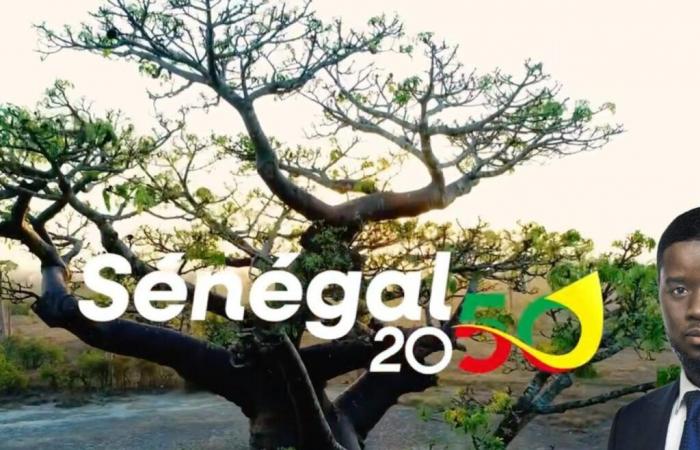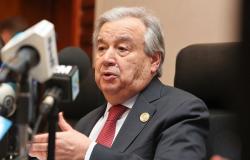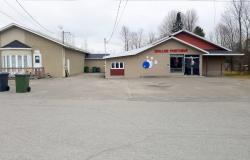The government’s public policy for 2050 cannot produce the expected results if the consequences of climate shocks between now and this period are not taken into account. The analysis is from the World Bank climate report presented yesterday, Tuesday, November 5.
“The vision of a prosperous Senegal, carried by 39 million inhabitants by 2050, is an achievable ambition, if it fully integrates climate considerations,” said the Director of Operations of the World Bank in Senegal, Keiko Miwa yesterday, Tuesday November 5 at the launch of the climate and development report (CCDR) for Senegal. According to the conclusions of this document, which aims to be an important tool to support the government of Senegal in identifying ways to reduce climate vulnerabilities and greenhouse gas emissions, as well as benefits and opportunities. resulting from this, the new authorities will have to take into account several parameters linked to climate change for development according to the advocated vision. According to World Bank expert and environmental specialist Arame Tall, the climate report showed a predicted rise in temperatures of 1.9 degrees to 4.5 degrees by 2090, particularly in the east. and the south of the country. It also accelerates the rise in sea level with a retreat of the coastline of 0.5 m to 2 m per year. It is also expected that greenhouse gas emissions will increase by almost 50%. According to also Arame Tall by 2050, “75% of the Senegalese coasts will be threatened”. In Dakar, the population exposed to coastal flooding is expected to increase by 20 to 30% by 2050, with associated economic damage estimated at 30%. In the urban area, a population estimated at 65% by 2050 is expected. The World Bank report also highlights, “risks of increased urban flooding, public health problems due to extreme heat and pollution , a loss of competitiveness of cities that are engines of development.”
A likely drop in agricultural and maritime yields
In agriculture, a potential reduction in agricultural production of 17% and household income of 8% is expected by 2030. In the fishing sector, World Bank forecasts show a decline potential catches of 17 to 19% by 2050. The World Bank study predicts an increase in vector-borne diseases by 2050. It is also expected an increase in water withdrawals of 30 to 60% by 2035. Arame Tall also reports “the intensification of climate shocks by 2050”. The amplification of levels of poverty and inequalities, a consequence of climate shocks, must be taken into account. The World Bank also reports that, “climate inaction with the absence of efforts in financing resilience will lead to average GDP losses of 3-4% in 2030 up to 9.4% by 2050 . » It is also envisaged, “a drop in the added value of agriculture of 10% compared to the reference scenario by 2050”. According to the survey, “2 million more Senegalese will live in poverty by 2030 because of climate shocks”.
Need to invest in adaptation
The World Bank’s director of operations in Senegal, Keiko Miwa, recalled that “average annual GDP losses could reach up to 9.4% by 2050, if no additional climate change adaptation measures are taken.” is taken, recommends further action.” “Climate measures can reverse this negative trend and promote economic growth, estimated, for adaptation measures alone, at least 2% of GDP by 2030,” she says. Keiko Miwa also says that, “the socio-economic benefits and gains of climate action are considerable, including increased agricultural productivity, food and water security, improved public health, improved ecosystem services , better mobility, cheaper and more reliable energy, and the creation of new jobs.”
In the primary sector alone, “climate action could generate around 155,000 new jobs, highlighting the significant potential of the agriculture, livestock and fishing sectors to fully contribute to the economy,” adds -she.
To realize this ambition and enable Senegal to follow a climate-resilient growth trajectory, the CCDR recommends prioritizing and accelerating resilience and mitigation measures according to their urgency. “These measures should focus on productive systems (food security, water security, forests), sustainable cities, human capital; as well as concrete actions to facilitate the energy transition,” explains the Director of Operations of the World Bank. “Financing will require significant financial resources, including from the private sector, as well as innovative approaches and policy reforms to ensure long-term sustainability,” she says.
Investments are estimated at $8.2 billion over the period 2025-30 (i.e. 4.5% of GDP during this period) and at $10.6 billion over the period 2031-50 (i.e. 2% of GDP during this period). ). According to the Minister of the Environment and Ecological Transition, Daouda Ngom, “the flood zones from Bakel to Matam, the floods in Touba, Keur Massar, Kaolack, etc., the coastal erosion along the entire coast, are endangering the ecosystem and remind us of the urgent need to tackle the climate issue head on. Daouda Ngom recalls that it is important to transform the development trajectory. Thus, he recalls, “the 2050 vision calls for an ecological transition that mobilizes all stakeholders. Take collective measures to reduce greenhouse gas emissions while promoting economic models that are more respectful of the environment.”
Fatou NDIAYE






